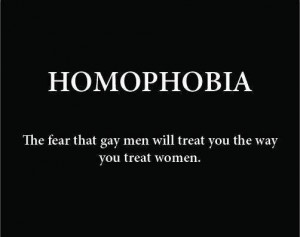Critical reflections on sharing ‘Gay For A Day’ video

Critical reflections on sharing ‘Gay For A Day’ video
Last week, I shared this video, ‘Gay for a day’ on twitter, after reading this article in the Amsterdam based newspaper Het Parool: “In Amsterdam worden mannen niet graag op straat versierd” (‘Men don’t like to be picked up in the streets of Amsterdam’)
I didn’t give it much thought, though, not enough.
After sharing, I got critical reactions that made me reflect and reconsider. What is wrong about the video? Why did I post it? I watched the video again, with a more critical mind.
In the video, that apparently went viral, a young white man (and later a woman) pretends to be going gay for a day, approaching men (and later women) in public spaces in Amsterdam with what he considers to be compliments, flirting or attempts at picking up someone. And he is doing so in a rather blunt and clumsy way. In my first superficial viewing, the video is part of a growing genre, mimicking and masquerading dominant behavior, reversing catcalling, mirroring the ways straight people talk to and about gay people, the ways white people talk to and about black people, etcetera. Some of these are rather brilliant, others can be interesting in their idea but bad in implementation, some are really bad. Most of these seem to be made with good intentions. Often, like the video ‘Gay For A Day’, the good intentions get mixed up with unthoughtful reproduction of stereotypes.
The video claimed to be tackling homophobia in The Netherlands, opposing the popular view of this country as a tolerant and accepting place for homosexuals. The maker of the video in the Parool article: “Veel mensen denken dat Nederland heel ver is in de acceptatie van homo’s. Ik vind dat we met het filmpje aantonen dat dat tegenvalt.” (‘Many people perceive The Netherlands to be quite ahead in the acceptance of gay people. I think this video proves otherwise.’)
Also, the video clearly illustrated the different ways men and women are responding to more or less similar approaches. Something is at stake when it comes to men, masculinity and homophobia. Apparently, same-sex homophobia is at least much more aggressive towards men than towards women.
Even more, the video diverted from the other popular view that homophobia is only found among (certain) migrant communities. It showed men of different colors and backgrounds reacting negatively and aggressively. Over the last years, the acceptance of homosexuality has become part of the multicultural debate, sometimes even part of a clearly xenophobic agenda, in which migrants are blamed for being homophobic, literally whitewashing the hands of the most dominant, privileged groups in society. As pointed out in all kinds of research, homophobia occurs in all layers of society. ‘Homo’ is still mostly used in a derogatory way in schools and beyond, to put boys and men in place, to police their gender behavior, to put the boundaries of ‘real masculine behavior’. The video exposed the limitations of Dutch tolerance of of homosexuality – Als ze maar van me afblijven (Dutch pdf – ‘As long as they don’t touch me’).
What the guy in the video does is, in fact, mirroring the way straight men think they should be approaching women. It is how straight men teach each other they should be making a pass at women. And next, projecting this on gay men, thinking that gay men will be treating straight men in such a way. Homophobia is the fear that gay men will treat you the way you treat women. Thus, the video that wants to target Dutch homophobia, is reproducing homophobic imagery itself. II don’t think it reflects or expresses the lived and experienced reality of gay men who have to deal with homophobic exclusion and violence on a daily basis. Eager to do good, by being critical about the lack of tolerance in Dutch society, the video reinforces the homophobia it tries to tackle.
I learned some important lessons. First, beware of my blind spots, they are real! Second, don’t just share anything, give it critical thought. Third, be aware that what I share on twitter is much more public than what I share on facebook – where visibility is limited to my friends only. Fourth, when sharing something that doesn’t necessarily reflect my own opinion, but that I want to use for making a certain point or stirring up a certain discussion, I will have to make my point clear. I can’t expect my shares to speak for itself. So, uncritically sharing of this video was not a good idea. I should not have posted this video just like that, maybe not at all, probably not on twitter, and definitely not without any comments or reflections from my side.
Of course, I may well have missed other reasons to be critical about this video. Also, I may be sharing other things that need more critical reflection and discussion. I’m happy to receive feedback, very willing to learn, and always eager to have a constructive dialogue. So please continue sharing your feedback, thoughts, feelings and opinions.

